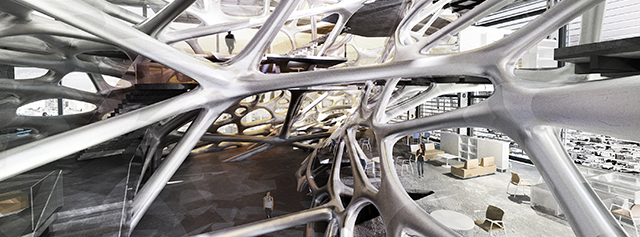
Displacement and Adaptation
Shima Sahebnassagh; advised by Jonathan Bachrach, Sara Dean, Etienne Turpin, and Kyle Steinfeld

The globalization of capital and the sharp rise in technical capabilities have produced major scaling effects in every aspect of social and economical factor. As architects who design for such societies we need to get evolved with technologies to be able to understand and author control on the relationships that we design for. As Tschumi suggests, architecture should be studied through the three axes of space, movement and event. He defines events as "a particular item in a program. Events can encompass particular uses, singular function or isolated activities". When events are added to spatial sequence, they are not qualified independently but they construct a narrative that can be articulated through architectural language.
The movie Brazil demonstrates a dystopian city with- out bothering much about science and technology in a conventional fashion. Sam, the main character of the movie tries to defeat the technology based system of the society, by relying on technology and getting involved with the system. Dreaming about utopian city or society could always be seen in history. This project pursues urban social and economical relationships that look for such a concept in reality.
The best-known and most valued present piece of art, is mostly famous for its enigmatic subject's expression, its epic composition, and atmospheric illusionism. What I am mostly inspired by this piece of art is the ambiguity that it embeds and makes it be alive after 500 years. In other words, the emergent result of very careful crafted piece of art, as con- tent, leaves it to others to make it their own by using it as context. This project tries to have a readymade context, by using well-established examples from the history and discipline of architecture.
In Rubik's cube parlance, a memorized sequence of moves that has a desired effect on the cube, is called an algorithm. Each method of solving the Rubik's Cube employs its own set of algorithms, together with descriptions of what effect the algorithm has, and when it can be used to bring the cube closer to being solved. This project derives from programmatic concepts that then define a set of typologies for functional spaces. The set of spaces then could be placed together in a number of ways based on an algorithms which defines the rule.
The design of the Pompidou center is based on exposing the infrastructure and skeleton of the building to show the integration of different systems that make the architecture. In other words, here the architecture is re-presentation of architecture as a machine. Looking at architecture as combinatory system that emerges by a set of local rules, but always considers the global goal, this project asks the question: what if the space itself becomes the main drive or system that rules the architecture.
This painting challenges the viewer to ask whether what they see corresponds with what they think they know or not. Moreover, by its irrational approach to perception and reality, and in our world of polarized, complex and fragmented realities, that is the emergent result of using technology and data in social and financial global systems, this project seeks the ways in which that architecture could implement the complexities and ambiguities by emerging from clear rules and objectivity.



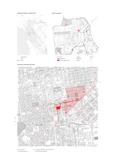
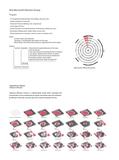
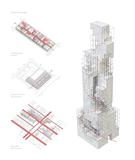
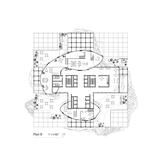
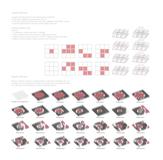
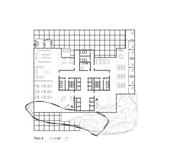







There's more!
Some other projects from this same class have been posted, as well as some interesting student work from this same year.